After a satisfying breakfast, we commenced our walk no later than 8.30am.
Leaving Bagno Vignoni we descend to the Orcia river and follow old dirt tracks shaded by a woody tree area
. We climbed to a ridge dominated by a castle Ripa d'Orcia (15th Century), before descending. Unfortunately we were told not to visit this castle as it was not tourist friendly and is a private exclusive hotel.
As we descend we see many vineyards and olive groves and eventually walk into Castelnuovo d'Abate and its neighbouring abbey, Monastery of San't Antimo.
The origins of the abbey are obscure. Archeological investigation of the site is incomplete, but has yielded artefacts from Late Classical times. The foundation of the original Benedictine monastery dates to the time of Charlemagne. The various accounts of Charlemagne founding the abbey are without direct historical foundation; they first appear in a document of the emperor Henry lll from 1051.
This was the period of greatest power of the abbey, which had authority over 38 churches, from Pisa to Grosseto, and control of about 1000 mansi, or farm estates, throughout Tuscany. The most important possession of the abbey was the castle of Monalcino, which was the residence of the abbot
.In the mid-12th century, halted in its expansion northwards by Forence, Siena moved its attention to Montalcino. In 1145 the monks were forced to cease the castle of Radicofani the Sienese. In 1189 Pope Clement lll placed the Pieve of Montalcino under the bishop of Siena. Filippo Malavolti, podesta of Siena, attacked and partly destroyed Montalcino in 1200. An agreement of 1212 stated that the abbey had to hand over a quarter of its territories to Siena, including Montalcino. In 1291 Pope Nicholas IV ordered the union of the abbey with the Guglielmites, a reformed branch of the Benictines, in order to give back strength to the abbey. However, after another period of decay in the 15th century, Pope Pius ll annexed St. Anthimus to the new diocese of Montalcino-Pienza (1462), whose bishop was Pius' nephew. The abbey decayed to the point that in the 19th century it was used as stable. In the 1870s the Italian state restored it.In 1992 the abbey became again an active monastery with the arrival of a new religious community of Canons Regular of the Order of Premontre
. The name of the abbey may refer to Saint Anthimus of Rome, whose relics were supposedly moved here during the late 8th century.
Monastery ofSan't Antimo is particularly fine example of Romanesque Cistercian architecture. It was built in the 12th century. The exterior facade with its menagerie of animals, the capitals atop the exterior column and the remaining old frescoes are quite intriguing.
Whilst Peter and I were waiting for the shuttle bus, we were accosted by a young Italian man, who was cruising us. Peter and I were not the only boys accosted, so was Peter Finney and Rob Collins.
The shuttle bus eventually arrived and the group were shuttled to Montalcino to our accommodation Hotel dei Capitani.
On arrival we changed into some comfortable clothing and went to the Fortress of Montalcino for a wine tasting of Brunello wines which this area is renown for. The historical centre is dominated by the mighty and imposing Rocca or Fortress of Montalcino built in 1361 to mark the passage of Montalcino under the domination of Siena
.
The town has been made incredibly rich and famous by its Brunello wine, one of the world's best and most appreciated Italian wines. Montalcino was already well-known for its fine red wines during the 15th century. However, the precious formula of the fantastic Brunello was invented in 1888 by Ferruccio Biondi Santi, who first had the idea of leaving out the grapes used in the traditional Chianti recipe, such as Canaiolo and Colorino, and using only the Sangiovese variety.
After our wine tasting which accompanied some food tastings and charged €10 each, we had time to explore Montalcino. Another landmark of Montalcino we visited was the tall and slender Clock Tower that graces the Palazzo dei Priori, the city's town hall, while below lies the main square known as Piazza del Popolo with its characteristic Gothic loggia.
The streets with their stone pavements are truly enchanting and the village is a wonderful place to stroll around among the labyrinth of charming arts and crafts shops, cafes, restaurants and wine bars.
For dinner we dinned alfresco at Bacchus Enoteca and on our way back to Hotel del Capitani we dropped into a shop and purchased some Siena paneforte.
From Thermal Springs to Chants in an Abbey.
Thursday, September 01, 2011
 Montalcino, Tuscany, Italy
Montalcino, Tuscany, Italy
Other Entries
-
10Swimming in the Ionian Sea
Aug 1517 days prior Stazzo, Italyphoto_camera3videocam 0comment 0
Stazzo, Italyphoto_camera3videocam 0comment 0 -
11Road Trip to Ragusa Ilba
Aug 1616 days prior Ragusa Ibla, Italyphoto_camera15videocam 0comment 0
Ragusa Ibla, Italyphoto_camera15videocam 0comment 0 -
12To Shop or Not To Shop, That is the Question!
Aug 1715 days prior Acireale, Italyphoto_camera6videocam 0comment 0
Acireale, Italyphoto_camera6videocam 0comment 0 -
13From Beach to Mountain and into a Cock Bar
Aug 1814 days prior Castelmola. , Italyphoto_camera9videocam 0comment 2
Castelmola. , Italyphoto_camera9videocam 0comment 2 -
14Hiking Etna.
Aug 1913 days prior Nicolosi, Italyphoto_camera16videocam 0comment 4
Nicolosi, Italyphoto_camera16videocam 0comment 4 -
15A World of Ceramics
Aug 2012 days prior Caltagirone, Italyphoto_camera13videocam 0comment 0
Caltagirone, Italyphoto_camera13videocam 0comment 0 -
16Welcome to Sicily Peter Selar
Aug 2111 days prior Zafferana Etnea, Italyphoto_camera2videocam 0comment 1
Zafferana Etnea, Italyphoto_camera2videocam 0comment 1 -
17Good Company and Good Food.
Aug 2210 days prior Santa Tecla di Acireale, Italyphoto_camera2videocam 0comment 0
Santa Tecla di Acireale, Italyphoto_camera2videocam 0comment 0 -
18Peter visits Acireale
Aug 239 days prior Acireale, Italyphoto_camera17videocam 0comment 1
Acireale, Italyphoto_camera17videocam 0comment 1 -
19Temples of Gods
Aug 248 days prior Agrigento, Italyphoto_camera21videocam 0comment 1
Agrigento, Italyphoto_camera21videocam 0comment 1 -
20Chill Out & Shopping
Aug 257 days prior Acireale, Italyphoto_camera4videocam 0comment 0
Acireale, Italyphoto_camera4videocam 0comment 0 -
21Checking out the sights with Aunty Mary & Cousins
Aug 266 days prior Aci Trezza, Italyphoto_camera20videocam 0comment 0
Aci Trezza, Italyphoto_camera20videocam 0comment 0 -
22Time Is Running Out!
Aug 275 days prior Acireale, Italyphoto_camera12videocam 0comment 1
Acireale, Italyphoto_camera12videocam 0comment 1 -
23Delights of Taormina
Aug 284 days prior Taormina, Italyphoto_camera13videocam 0comment 4
Taormina, Italyphoto_camera13videocam 0comment 4 -
24Transit to Montepulciano
Aug 293 days prior Montepulciano, Italyphoto_camera25videocam 0comment 0
Montepulciano, Italyphoto_camera25videocam 0comment 0 -
25The Journey Begins
Aug 302 days prior Pienza, Italyphoto_camera22videocam 0comment 0
Pienza, Italyphoto_camera22videocam 0comment 0 -
26Immersing The Body in the Thermal Springs.
Aug 311 day prior Bagno Vignoni, Italyphoto_camera11videocam 0comment 1
Bagno Vignoni, Italyphoto_camera11videocam 0comment 1 -
27From Thermal Springs to Chants in an Abbey.
Sep 01 Montalcino, Italyphoto_camera15videocam 0comment 4
Montalcino, Italyphoto_camera15videocam 0comment 4 -
28Tranquility and Peace.
Sep 021 day later Buonconvento, Italyphoto_camera8videocam 0comment 0
Buonconvento, Italyphoto_camera8videocam 0comment 0 -
29Beautiful Abbey and Gardens
Sep 032 days later Buonconvento, Italyphoto_camera13videocam 0comment 0
Buonconvento, Italyphoto_camera13videocam 0comment 0 -
30Three Remain, Eight Moved On.
Sep 043 days later Murlo, Italyphoto_camera22videocam 0comment 0
Murlo, Italyphoto_camera22videocam 0comment 0 -
31Beautiful Siena
Sep 054 days later Siena, Italyphoto_camera10videocam 0comment 0
Siena, Italyphoto_camera10videocam 0comment 0 -
32Another day of Churches!
Sep 065 days later Siena, Italyphoto_camera11videocam 0comment 2
Siena, Italyphoto_camera11videocam 0comment 2 -
33Goodbye Siena, Hello Milano.
Sep 076 days later Milan, Italyphoto_camera2videocam 0comment 0
Milan, Italyphoto_camera2videocam 0comment 0 -
34Exploring Milano, the Fashion Capital.
Sep 087 days later Milan, Italyphoto_camera14videocam 0comment 0
Milan, Italyphoto_camera14videocam 0comment 0 -
35Chilling Out in Milan
Sep 098 days later Milan, Italyphoto_camera3videocam 0comment 1
Milan, Italyphoto_camera3videocam 0comment 1 -
36Road Trip.
Sep 109 days later Pieve Emanuele, Italyphoto_camera3videocam 0comment 0
Pieve Emanuele, Italyphoto_camera3videocam 0comment 0 -
37From the Table to the Nudist Beach.
Sep 1110 days later Milan, Italyphoto_camera1videocam 0comment 1
Milan, Italyphoto_camera1videocam 0comment 1 -
38All Roads Lead to Rome
Sep 1211 days later Rome, Italyphoto_camera2videocam 0comment 1
Rome, Italyphoto_camera2videocam 0comment 1 -
39Discovering Rome.
Sep 1312 days later Rome, Italyphoto_camera15videocam 0comment 4
Rome, Italyphoto_camera15videocam 0comment 4 -
40Ancient Rome
Sep 1413 days later Rome, Italyphoto_camera16videocam 0comment 2
Rome, Italyphoto_camera16videocam 0comment 2 -
41Last Day in Rome
Sep 1514 days later Rome, Italyphoto_camera17videocam 0comment 3
Rome, Italyphoto_camera17videocam 0comment 3 -
42Home Sweet Home!
Sep 1615 days later Melbourne, Australiaphoto_camera1videocam 0comment 0
Melbourne, Australiaphoto_camera1videocam 0comment 0
Comments
2025-05-22
Comment code: Ask author if the code is blank

 Montalcino, Tuscany, Italy
Montalcino, Tuscany, Italy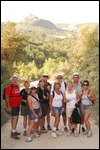
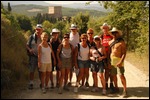
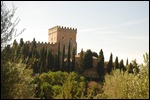
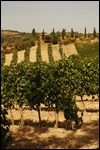


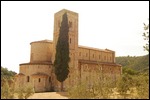
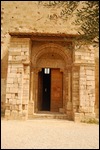
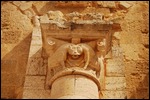
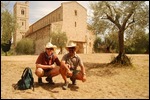
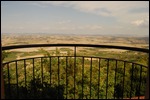
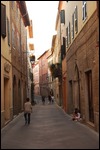
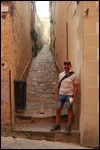

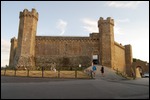
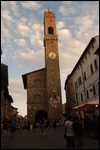
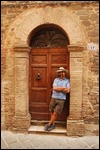
Miss Caroline
2015-08-27
Oh Jojo and Peter, this is one of the most beautiful places you
have visited...
So old and worldly...
Great pics and you've captured the Villages
perfectly...
Keep enjoying...